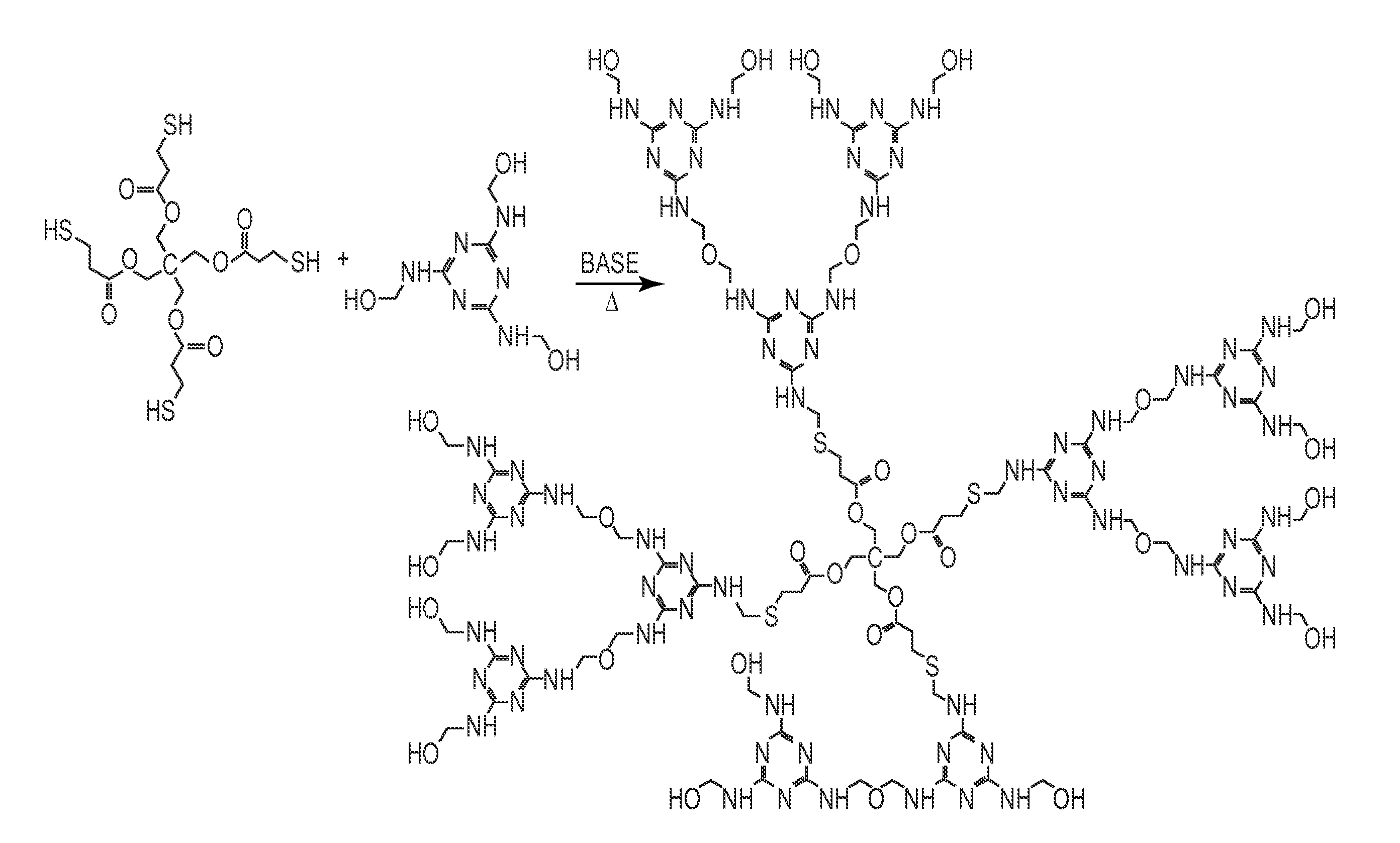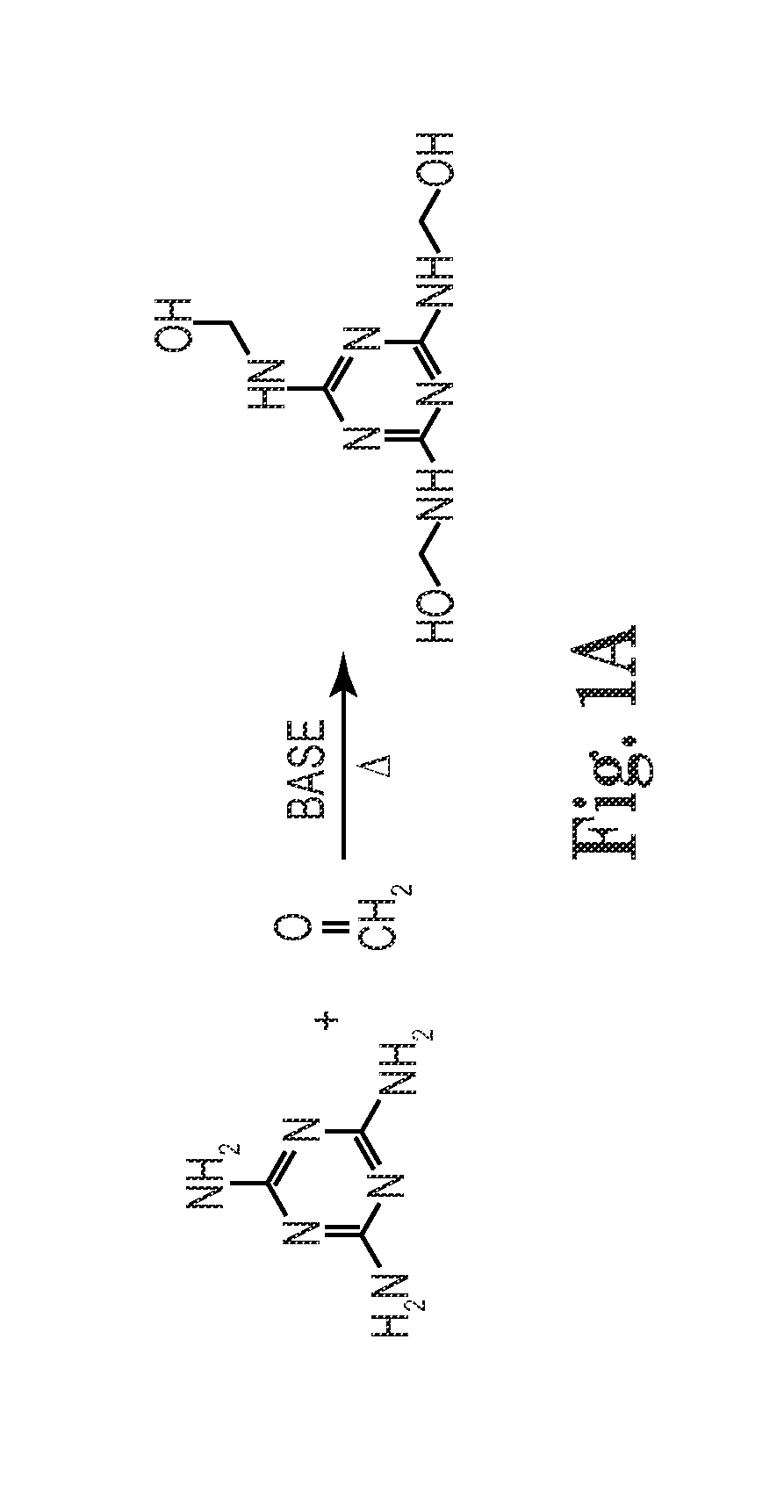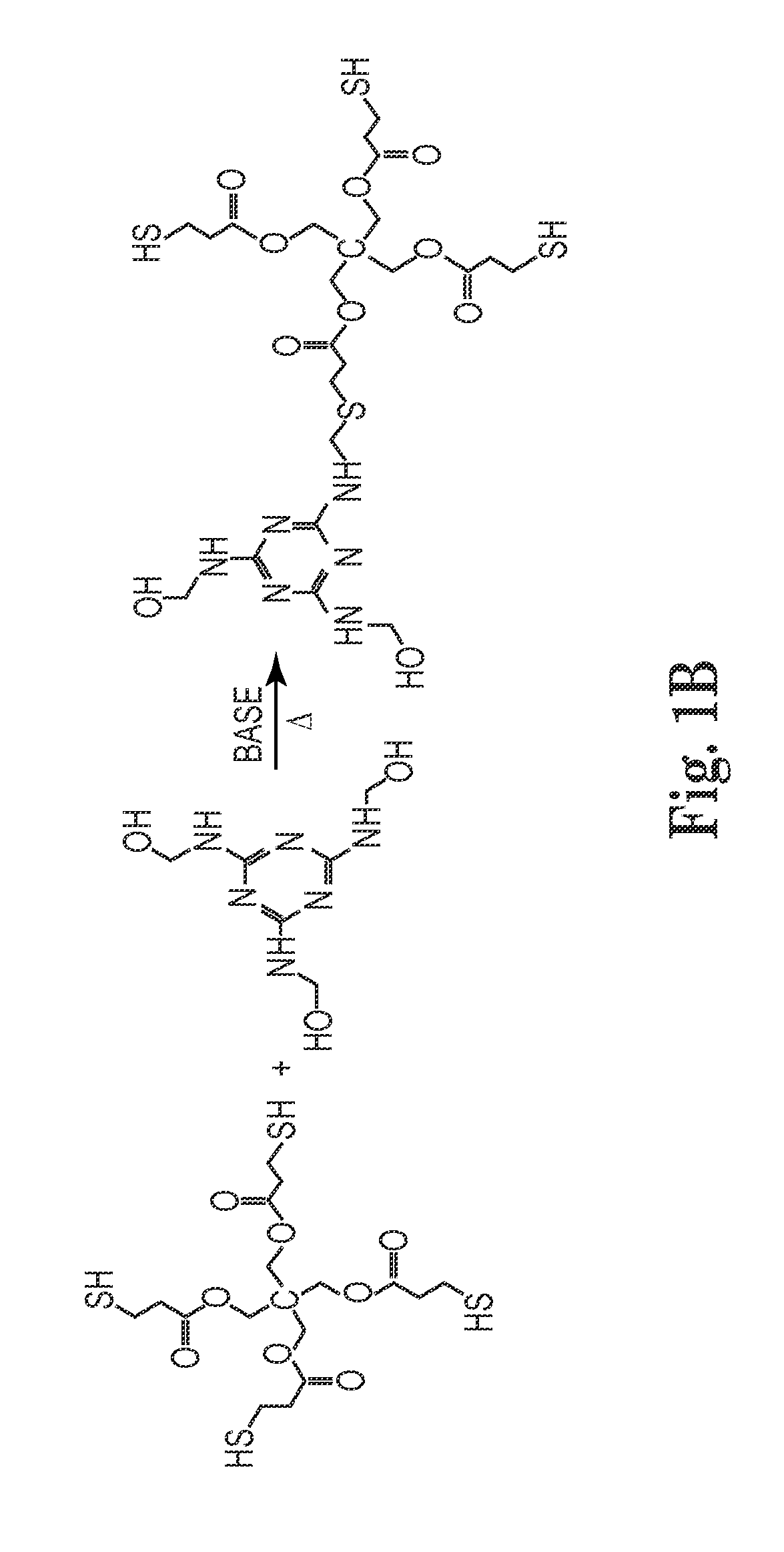pH-Sensitive Microparticles with Matrix-Dispersed Active Agent
- Summary
- Abstract
- Description
- Claims
- Application Information
AI Technical Summary
Benefits of technology
Problems solved by technology
Method used
Image
Examples
example 1
[0101]Synthesis of Water Soluble pH-Sensitive MFPTT Prepolymer
[0102]An Melamine (M), Formaldehyde (F), Pentaerythritol Tetra (3-Mercaptopropionate) (PTT) (MFPTT) pH-sensitive particle synthesis process was developed after the discovery of a water soluble pH-sensitive prepolymer that can be utilized to modify a polycondensation process for preparing monodispersed melamine-formaldehyde microspheres.
[0103]It was found that a reaction product of MFPTT is water soluble at least at some stage of the reaction. And this water soluble prepolymer (or, more likely, a mixture of prepolymers) is used as wall material for forming pH-sensitive microcapsules as well as pH-sensitive microparticles.
[0104]From a typical formula for pH-sensitive microcapsules based on melamine formaldehyde and PTT, the proper molar ratio of M, F, and PTT was selected at the following ratio:
M:F:PTT=1:3.32:0.172
[0105]The ratio between M and F is close to 1:3; the reaction between them is represented in FIG. 1A, where M a...
example 2
Formulation With Surfactant
[0111]Another formula was used to synthesize MFPTT particles with surfactants.
TABLE 3Formula for MFPTT particle.ReagentMass (g)Water90Formaldehyde (37%)9.6Melamine4.5PTT3.2SDS1.5Gum arabic1.5pTSA
[0112]Two synthesis processes were tested based on this formula: with and without acid catalyst.
[0113]The first test was done without any acid catalyst. The starting formula in Table 3 was followed, without using acid (p-toluene sulfonic acid (pTSA)). The formula mixture was heated at 65° C. for 2 hours, before the experiment ended. The resulting particle size was not homogenous, the smaller particles seemed to attach onto the bigger ones. The surfactant did keep the oligomers apart from each other, so there were no sticky oligomers formed at the bottom of the beaker or on the wall of the beaker. FIG. 3 shows MFPTT droplets (panel A) and microparticles (panel B) formed under this test 1 process viewed under an optical microscope.
[0114]The second test was done with ...
example 3
[0118]pH-Sensitive Microparticles With Corrosion Indicator
[0119]Several microcapsule formulas have been developed over time for corrosion indication functions: oilcore phph microcapsules formed through an interfacial polymerization process; watercore phph microcapsules formed through interfacial polymerization; and oilcore phph microcapsules formed through in-situ polymerization. These microcapsule formulas all provide pH and corrosion indication functions in solution, in gel, and in paint through color change. The intensity of the color change is largely dictated by the amount of phph present.
[0120]In order to increase the amount of phph content, we developed a pH-sensitive microparticle formula with active agent phph dispersed in polymer strands. These microparticles were found to provide the strongest color change due to their high phph content. There are two advantages associated with this phph microparticle formula: the first is its high phph content, up to 25 to 30 wt %; the s...
PUM
| Property | Measurement | Unit |
|---|---|---|
| Percent by mass | aaaaa | aaaaa |
| Diameter | aaaaa | aaaaa |
| Weight | aaaaa | aaaaa |
Abstract
Description
Claims
Application Information
 Login to View More
Login to View More - R&D
- Intellectual Property
- Life Sciences
- Materials
- Tech Scout
- Unparalleled Data Quality
- Higher Quality Content
- 60% Fewer Hallucinations
Browse by: Latest US Patents, China's latest patents, Technical Efficacy Thesaurus, Application Domain, Technology Topic, Popular Technical Reports.
© 2025 PatSnap. All rights reserved.Legal|Privacy policy|Modern Slavery Act Transparency Statement|Sitemap|About US| Contact US: help@patsnap.com



